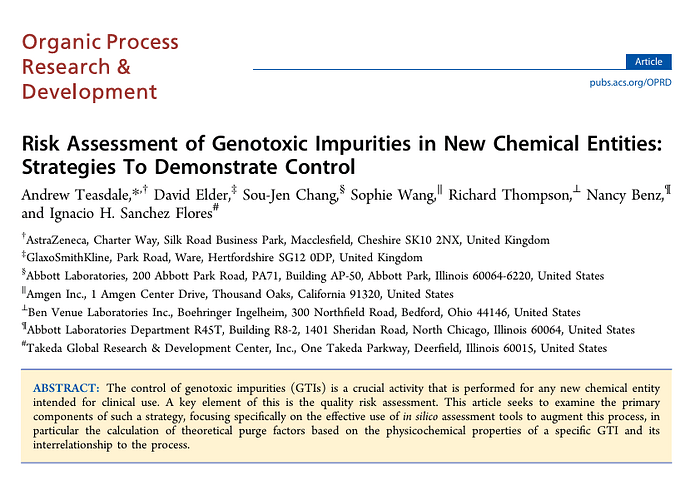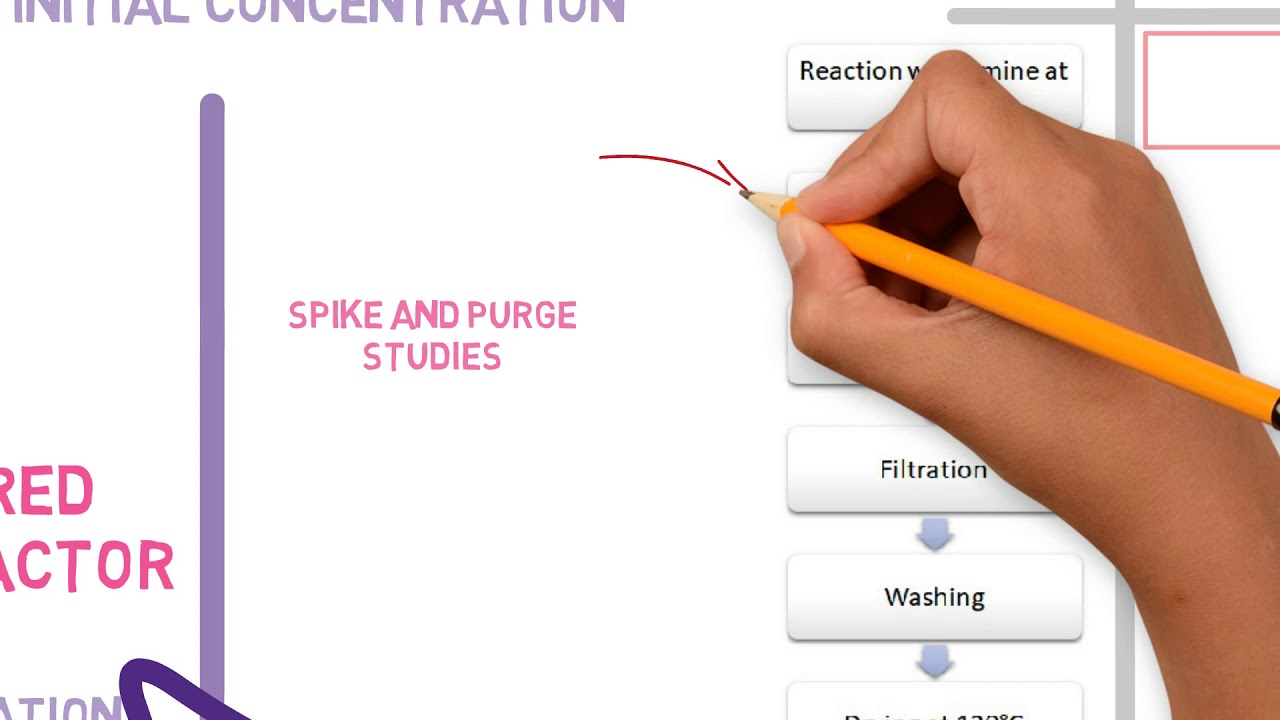The name Dr. Andrew Teasdale @AndyT is probably familiar to you in this Nitrosamines space if you are new to it… But Dr. Teasdale’s contribution to the Mutagenic impurity control came earlier as the mastermind of the ‘purge factor calculations’.
In a series of early papers, Dr. Teasdale proposed The concept of predicting the clearance of potential mutagenic impurities (PMIs) without experimental measurements. He proposed a systematic approach for PMI purge prediction based on the interrelationship of the physicochemical properties of the impurity and the manufacturing process conditions to which the impurity is exposed. A scoring system was used to understand the extent of the PMI removal through evaluation of the process parameters and the physicochemical properties of the PMI (reactivity, solubility, and volatility). The concept of evaluating PMI-related risk based on process knowledge was later incorporated into current regulatory thinking. ICH M7 explicitly cited this semiquantitative approach and has been widely applied across the industry. The strategy is underpinned by the expertise of the individual or group that performs the risk assessment. It was believed that the utility and consistency of this predictive approach could be further augmented by the development of a standardized in silico system, which is available today.
I have seen this purge prediction approach beautifully applied in many nitrosamine-generating or high-risk syntheses. In peer-reviewed publications, it has not only proven its effectiveness in determining the risk of nitrosamine formation but has also been validated with experimental data.
Learn more about it:
Control of Mutagenic Impurities: Survey of Pharmaceutical Company Practices and a Proposed Framework for Industry Alignment
Access: https://doi.org/10.1021/acs.oprd.0c00517
Evaluation and Control of Mutagenic Impurities in a Development Compound: Purge Factor Estimates vs Measured Amounts
Access: https://doi.org/10.1021/acs.oprd.5b00263
Risk Assessment of Genotoxic Impurities in New Chemical Entities: Strategies To Demonstrate Control
Access: https://doi.org/10.1021/op300268u
Assessment of Predictivity of Semiquantitative Risk Assessment Tool: Pazopanib Hydrochloride Genotoxic Impurities
Access: https://doi.org/10.1021/op400139z
Leveraging ICH M7 Control Options 3 and 4: Discussion and Clarification Using Industrial Case Studies
Access: https://doi.org/10.1021/acs.oprd.4c00207
Establishing Best Practice for the Application and Support of Solubility Purge Factors
Access: https://doi.org/10.1021/acs.oprd.2c00360
A Primer for Pharmaceutical Process Development Chemists and Analysts in Relation to Impurities Perceived to Be Mutagenic or “Genotoxic”
Access: https://doi.org/10.1021/acs.oprd.0c00343
A Kinetics-Based Approach for the Assignment of Reactivity Purge Factors
Access: https://doi.org/10.1021/acs.oprd.5b00257

